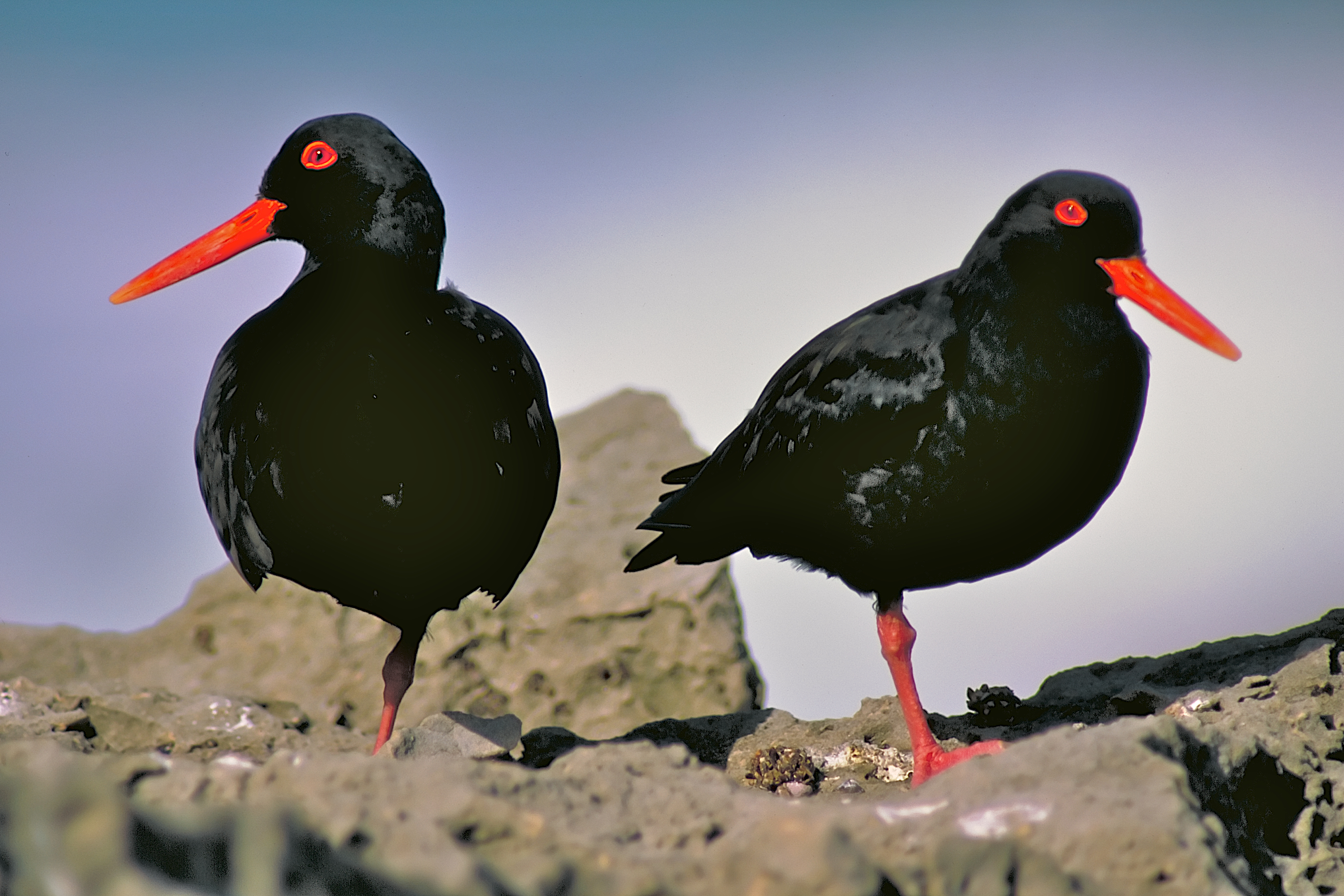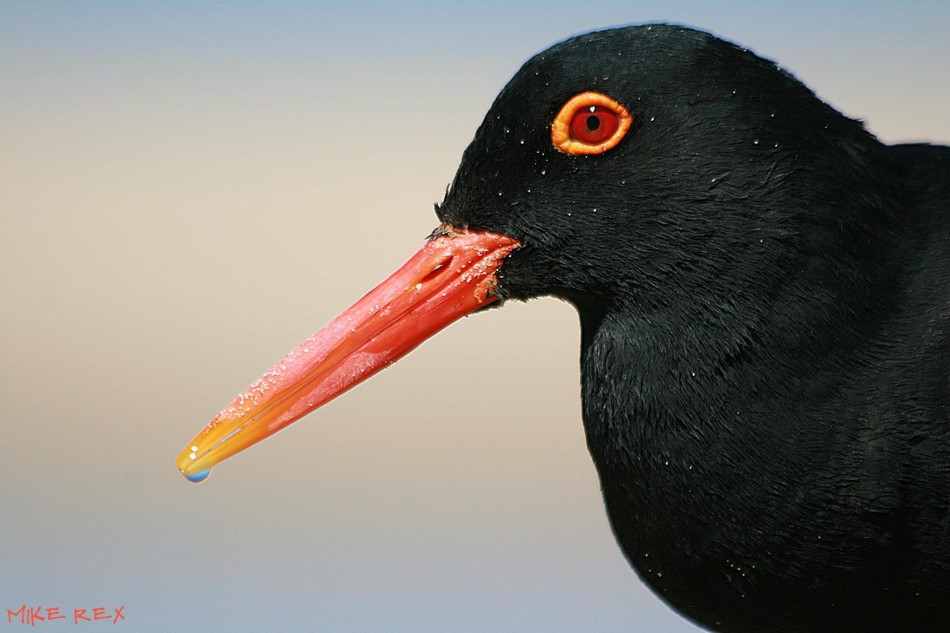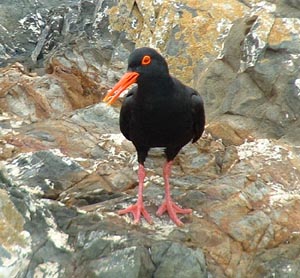
Haematopus moquini
TAXONOMY
Haematopus moquini Bonaparte, 1856, Cape of Good Hope.
Monotypic.
OTHER COMMON NAMES
English: African oystercatcher, black oystercatcher; French:
Huоtrier de moquin; German: Schwarzer austernfischer; Spanish:
Ostrero negro Africano.
PHYSICAL CHARACTERISTICS
16.54–17.72 in (42–45 cm); 1.28–1.67 lb (582–757 g), females
1.42–1.76 lb (646–800 g). Dark overall with vermilion bill and
eye ring, red eye, and pink legs. Females have noticeably
longer bills.
DISTRIBUTION
Coastal southern Africa from northern Namibia to Cape of
Good Hope and east to Natal.
HABITAT
Sandy and rocky shores, offshore islands, occasionally estuaries
and coastal lagoons.
BEHAVIOR
Territorial, relying on camouflage on dark rocky substrates.
Sedentary adults rarely disperse as far as juveniles; most often
less than 100 mi (160 km) in any case.
FEEDING ECOLOGY AND DIET
Eats limpets, mussels, whelks, and polychaetes in rocky areas,
wider range of prey on sandy substrates but favors sand mussels.
REPRODUCTIVE BIOLOGY
Usually breeds on offshore islands and sandy beaches, laying
one to two eggs between October and April. Eggs are greenish
or buff with dark brown spots. Eggs and young are vulnerable
to terrestrial mammalian predators, although young are well
camouflaged. The chick plumage is gray with black stripes on
back and sides.
CONSERVATION STATUS
Considered Near Threatened as of 2001, with a total population
of about 5,000 birds. Major threats are introduced mammalian
predators on island populations, followed by human
disturbance on sandy beaches.
SIGNIFICANCE TO HUMANS
None known.
Photo Gallery of - African black oystercatcher




 Animalia Life
Animalia Life